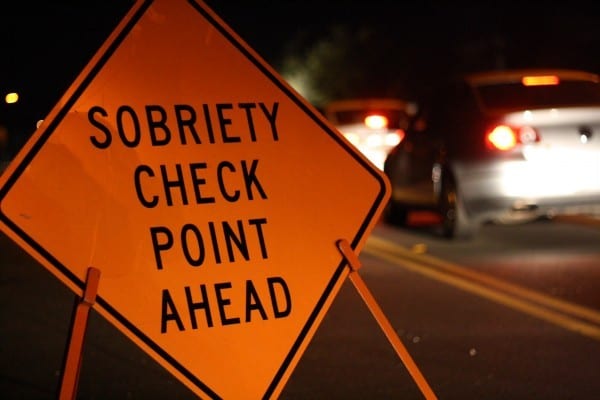
Normally, police officers must have reasonable suspicion to detain motorists for DWI or other criminal offenses. Such reasonable suspicion could be an offense committed within plain view, like a traffic infraction, or a tip from an informer.
Roadside checkpoints are a major exception to this rule. At a roadblock, officers need not have any suspicion at all, reasonable or otherwise, to detain motorists. Instead, officers can detain motorists according to a pre-arranged formula.
Roadblocks are a key weapon in the anti-DWI law enforcement arsenal. So, MN DWI lawyers must take extra care to hold the state accountable in such situations, to protect people from government overreaches. Many of these requirements are outlined in 1990’s Michigan Department of State Police v. Sitz. In this case, the United States Supreme Court finally set ground rules for DWI checkpoints, some of which are discussed below.
Supervisor-Level Planning
Before Sitz, some states allowed informal checkpoints. A group of officers could get together and block traffic for almost any law enforcement-related purpose.
The Supreme Court put an end to this practice for good. In DWI checkpoint situations, every detail about the roadblock’s operation must come from a supervisor. Generally, officers can have no discretion when it comes to items like:
- Checkpoint location,
- Hours of operation,
- Manner of detaining motorists, and
- Checkpoint purpose.
As indicated below, officers have some limited discretion when it comes to the manner of detaining motorists.
If police supervisors only make a general operational outline and allow officers to fill in the blanks, the checkpoint is probably invalid.
Safe Location
Most officers would like to place checkpoints in high-traffic areas, like freeway off-ramps. Moreover, they would like for these checkpoints to be at peak driving times.
But these conditions simply are not safe for motorists. If they exist, a MN DWI lawyer may once again be able to challenge the checkpoint’s validity. High-speed and high-traffic areas create a high potential for accidents.
Prior Publicity
Before officers set up the roadblock, the sponsoring agency must advertise the checkpoint’s exact location and hours of operation. A post on the police department’s website may be sufficient, but a social media post is even better. The idea is that people should have the chance to avoid the area altogether. Without sufficient publicity, motorists would be unable to exercise that right.
Sufficient Signage
There is a similar purpose here. There must be warning signs far away from the actual checkpoint. Motorists must have the option of turning around before traffic backs up. As a rule of thumb, a sign like “DWI Checkpoint Ahead” must be at least a quarter-mile before the checkpoint itself.
There are other requirements in this area as well. Officers should be available to direct traffic, or they should at least place safety cones in the road. Furthermore, the signs should clearly set forth the checkpoint’s purpose as well as its authorization under Minnesota law.
The signage question is really a question of individual rights, and these are the rights that MN DWI lawyers fight to preserve.
If officers see a motorist turn around to avoid the checkpoint, they have the right to follow that motorist. If they develop reasonable suspicion, perhaps because of the motorist’s unsafe lane change, they may detain that driver.
Minimal Disruption
Officers must keep traffic flowing as quickly as possible. Any wait longer than about three minutes is probably excessive. That includes both waiting in line and the time spent interaction with officers.
This is the one area where officers have some discretion. For example, many checkpoint operating instructions allow officers to pull over every other vehicle. However, if traffic backs up and wait time increases, they may have the discretion to detain every third or fourth vehicle. These alternate instructions must be clearly laid out in writing.
Respect for Individual Rights
Police officers are not the only people with rights at DWI checkpoints. Drivers have important rights as well.
Motorists have a legal responsibility to produce certain documents, such as a drivers’ license and proof of insurance, for inspection. There usually needs to be a sign to that effect. The obligation ends there. Motorists need not answer questions or even roll down their windows. A refusal to interact does not constitute reasonable suspicion. However, motorists who exercise their right to remain silent may pick up police tails, as outlined above.
Call Today To Speak With A MN DWI Lawyer From Carlson & Jones
Any failure to comply with Sitz or other rules may invalidate a checkpoint. For a free consultation with an experienced MN DWI lawyer, contact Carlson & Jones, P.A. We have a number of offices throughout the state.

